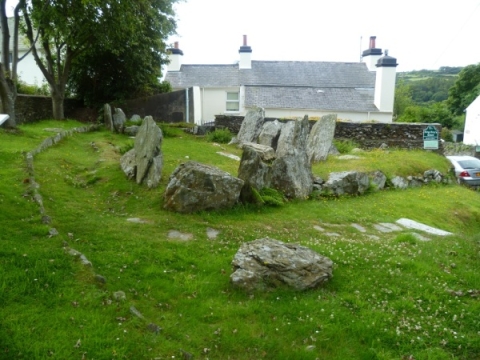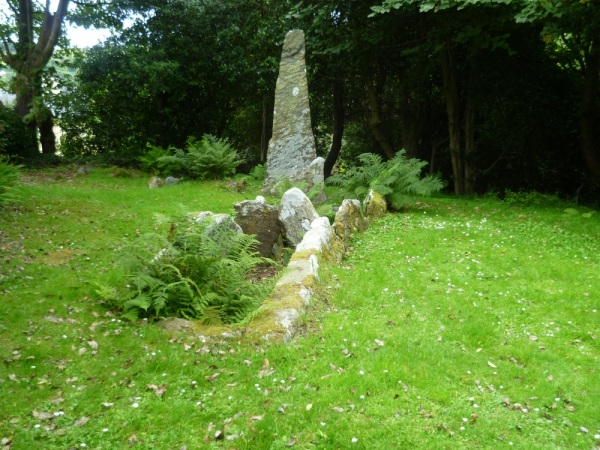King Orry's Grave - Megalithic Tomb in Isle of Man

King Orry's Grave in Laxey, Isle of Man (Manx: Laksaa, Mannin) is approximately 6000 years old. There are two tombs on this site which at one time could have been connected.
The first, King Orry’s Grave (East) is the largest known megalithic tomb on the Island. It contains three chambers once filled with burials. An arc of taller stones partially encloses a semi-circular forecourt and dry-stone walls, approximately 1.5 metres (5 ft) high in places, indicate the cairns original height. At the centre, 2 stones form an entrance leading into the first of three surviving burial chambers. The chambers were originally roofed with slabs, then buried beneath the cairn. The stone lying in front of the tomb entrance may once have been the lintel. The remains of burnt animal bones, Neolithic (Stone Age) tool fragments and pottery have been found in the area.
The second tomb, King Orry’s Grave (West), is just to the south and across the road from the first. Follow the sign and path that leads to the site which is behind a house called ‘Gretch Lea’. The layout is similar to King Orry’s Grave (East). It once had three chambers enclosed within a cairn of stones and earth. A three-metre-tall (10 ft) standing stone is still upright and along with the remains of other stones would have been the forecourt and entrance to the tomb.
Although called King Orry's Grave it is not the burial site of King Orry. King Orry (Manx: Ree Gorree) was Norse-Gaelic ruler King Godred Crovan. He took control of the Isle of Man and other islands between it and Norway, in 1079. In his honour many monuments were named after him, but there is no known connection between him and these prehistoric remains. The complete King Orry's Grave site has public paths, maintained landscape, and excellent information signs provided by Manx National Heritage.
This site is off the A2 Douglas - Ramsey Road and at the beginning of the Ballaragh Road (B11) opposite the top of Minorca Hill in Laxey. There is no car park and so necessary to park at the side of the road if travelling by car.
Images: Kind Orry's Grave (East) and (West) taken by author.







